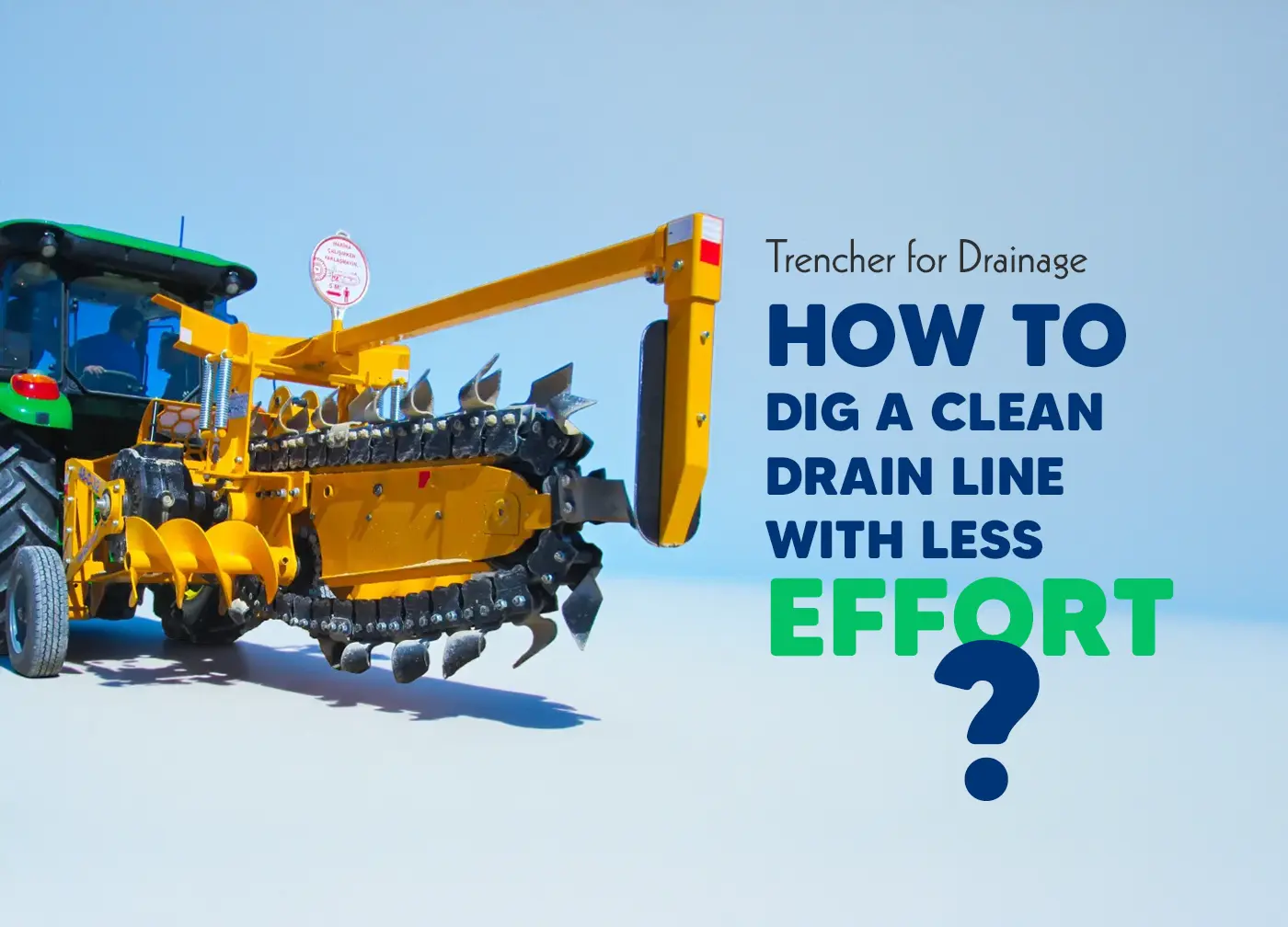
A drainage trencher enables convenient, neat and quick drain work. A lot of people search for an effortless long narrow trench opening option without the necessity of breaking up soil by hand. Here is how a trencher lets you lay out the perfect line for pipes, cables and water flow. It also describes what to look for before you sample one.
Understanding What a Trencher Does
One pass cuts the soil with a trencher. It holds the width constant and makes sure the depth is regular along your trench. This is not something a shovel can readily do. It saves hours when working long drain lines. You have a straight and clean trench with much less effort.
Why the Right Tool for Drainage is Necessary
Drainage work must be clean. Keep the trench narrow and straight. If the edges are ragged, water flow is altered. Pipes may not sit well. A good tool helps avoid this. And it prevents the dirt from collapsing back in.
How a Trencher Works in the Field
Some jobs require long open lines to transport water away from farms, gardens or small roads. A good trencher can deal with both wet and dry soil. It’s a good choice for clay, sandy and mixed soil. It maintains the cut even when things get downhill.
Trencher for drainage – Best Choices!
Choosing the best machine is a no-brainer if you know what to look for.
Check the Depth You Need
Some jobs need shallow lines. Others need deeper ones. The majority of agricultural and garden rillen lines are approx. one metre deep. Ensure your machine can perform at the depth you desire, and with a stable cut.
Look at the Width
Drainage pipes only require a small trench. A clean width is what makes a good fit to the pipe. If the trench is too wide, you add more filler soil. If it’s too tight, the pipe won’t sit straight.
Match The Machine To Your Tractor
A few trenchers are tractor-driven. Check the tractor’s power. Machine to tractor prvodı strong link that makes the cut a smooth, safe one.
Think About Soil Type
Wet fields need stronger chains. Good sharp teeth are what hard dry soil requires. Tungsten teeth are what most people prefer because they resist wear and tear. If you’ve got mixed soil in your field, this might be the best bet.
Look at the Speed
Your assignment might involve long lines. A steady working tempo translates into saved time. Coffin says that in many cases the best cut is obtained when he uses a medium speed, and this soil leaves the trench clean.
How to Use a Trencher for Drainage
The following is a detailed strategy followed by many:
Mark the line on the ground.
Set the depth.
If your machine allows you to adjust the width, set it.
Slowly start cutting.
Hold the tractor or implement still.
Measure the level every few yards.
Place the pipe.
Fill the trench with clean soil.
Users, including new ones, can move through this process with no problem.
When Is a Trencher You Put on a Tractor Right for You?
If you already have a tractor, you won’t get anywhere with any of the skid steer trenchers. It’s less expensive than a self-propelled model. It is easy to maintain. It also is great for long drainage lines of farms, fields and rural roads. Common choice of farmers for daily operation.
Closing Thoughts
Drainage work looks like grunt labor, but the right tool makes it a cinch. A drainage trencher provides clean cuts, correct depth and structurally solid walls of soil. It’s a time saver on large jobs and it helps get a solid finish. Choose the machine that matches your land and tractor, you should be able to accomplish most jobs with little trouble.




